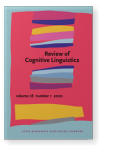Vol. 18:1 (2020) ► pp.1–18
Semantic comprehension of idioms
Their effectiveness and psychological reliability
This study intends to test the Graded Salience Hypothesis, in order to investigate the factors involved in comprehension. This research considered predictions derived from this hypothesis by evaluating the salience of idioms in the Persian language. We intended to measure Reading Time (RTs), and the design comprised 2 Contexts (figurative, literal), 3 Types of Statements (familiar vs. unfamiliar vs. less familiar) and RTs (long, short, equal). Two types of contexts (figuratively inviting and literally inviting contexts) were prepared. The software for this experiment was prepared for the purpose of self-paced reading experiments. Two pretests were performed. In the first pretest, participants rated the expressions on a 1–7 familiarity scale. The second pretest was designed to confirm that contexts are equally supportive. Then, expressions were divided according to their familiarity (familiar, less-familiar, unfamiliar). Sentences were used so that, according to the second pretest, their contexts would be equally supportive. Sentences were displayed on a PC, controlled by Windows 7. The self-paced reading task was applied using the Moving Windows software. In the first part of the experiment, participants read each idiom in figuratively inviting contexts and their RTs were recorded. In the second part of the experiment, participants read each idiom in literally inviting contexts and their RTs were recorded. Results of testing these idioms support the Graded Salience Hypothesis, but not entirely. Such findings suggested that sometimes context affects the access of salient information and a semi serial process is witnessed. Results indicate that the salient meaning of both familiar and less familiar idioms is figurative. In addition, salient meanings in the space following the unfamiliar idiom and the first word of the next (spillover) sentence, were both, figurative and literal.
Article outline
- 1.Introduction
- 2.Literature review
- 3.Theoretical framework
- 3.1Literal meaning/figurative meaning
- 3.2The Graded Salience Hypothesis
- 3.3The Graded Salience Hypothesis predictions
- 3.4Familiarity
- 3.5The retention/suppression hypothesis
- 3.6The spillover hypothesis
- 3.7Figurative language
- 3.8Idiom
- 3.9Self-paced Moving Windows tool
- 4.Method
- 4.1Participants/materials
- 4.2Instrumentation
- 4.3Pretests
- 4.3.1Pretest no. 1
- 4.3.2Pretest no. 2
- 4.4Procedure
- 5.Results
- 5.1Investigation of the first question
- 5.2Investigation of the second question
- 5.3Investigation of the third question
- 6.Discussion and conclusion
- 6.1Answer to question 1
- 6.2Answer to question 2
- 6.3Answer to question 3
- 6.4Conclusion
- Acknowledgements
-
References
